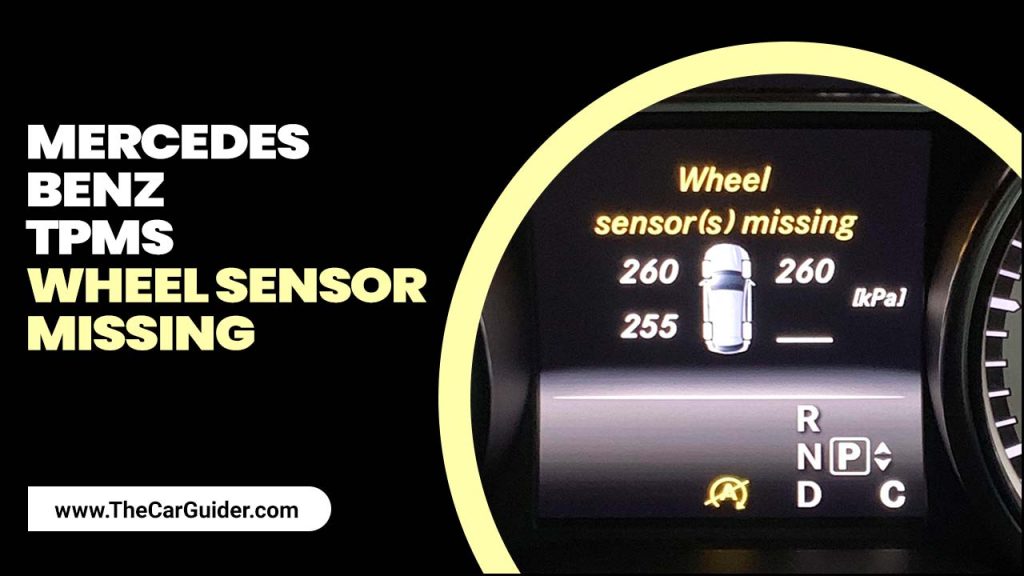The Tire Pressure Monitoring System (TPMS) is crucial in any vehicle, including Mercedes-Benz models. One essential element of the TPMS is the wheel sensor, which plays a vital role in monitoring tyre pressure and ensuring optimal driving performance.
The TPMS wheel sensor plays a vital role in monitoring tyre pressure, ensuring proper inflation, and alerting the driver of any potential issues.
However, when a Mercedes-Benz TPMS Wheel Sensor is missing, it can lead to various issues and potentially compromise the safety and efficiency of the vehicle. Here, we will delve into the importance of the TPMS wheel sensor and explore the reasons the Mercedes-Benz TPMS wheel sensor is missing.
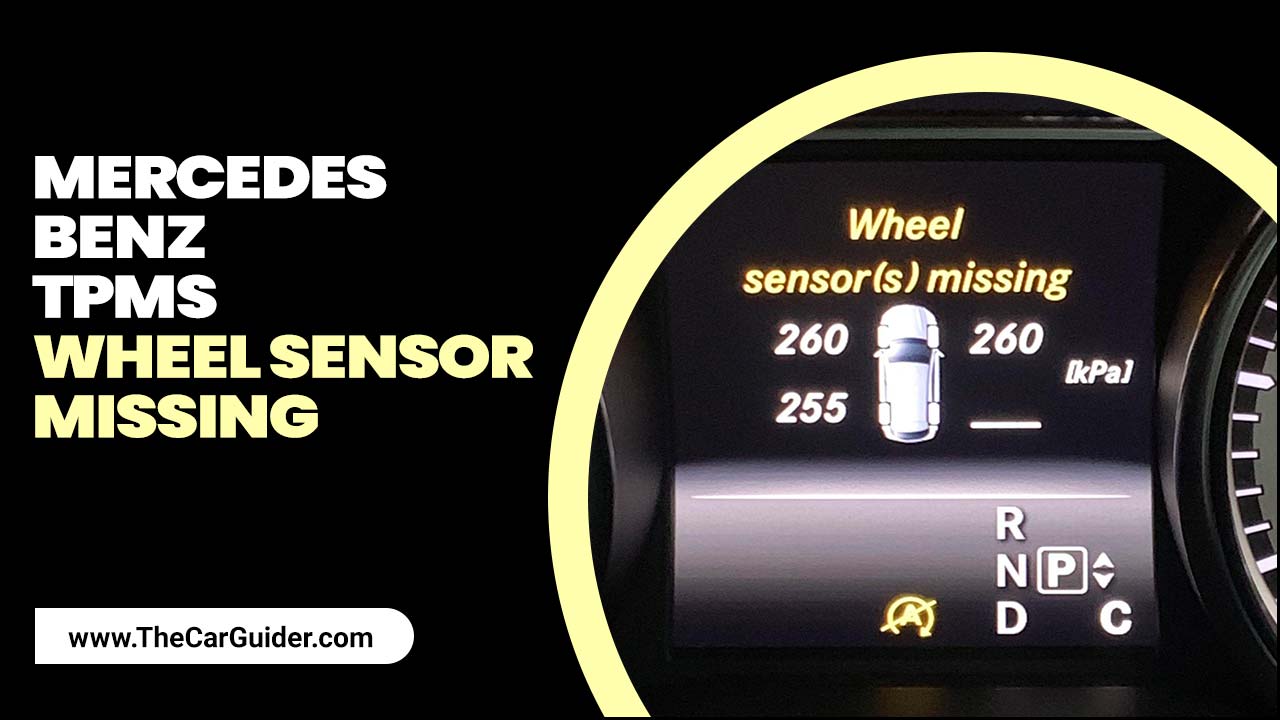
What Is The Tire Pressure Monitoring System (TPMS)
The Tire Pressure Monitoring System (TPMS) is an electronic system designed to monitor the air pressure in a vehicle’s tires. It continuously measures the tyre pressure and provides real-time updates to the driver, ensuring the tyres are properly inflated. By monitoring the tyre pressure, the TPMS helps to enhance safety, improve fuel efficiency, and extend the lifespan of the tyres.
In the event of low tyre pressure, the system alerts the driver through a warning light on the dashboard, allowing them to take prompt action and prevent potential tire-related issues or accidents. With the TPMS, drivers can have peace of mind knowing that their tyres are properly inflated, contributing to a smoother and safer driving experience.
Symptoms Of A Missing TPMS Sensor
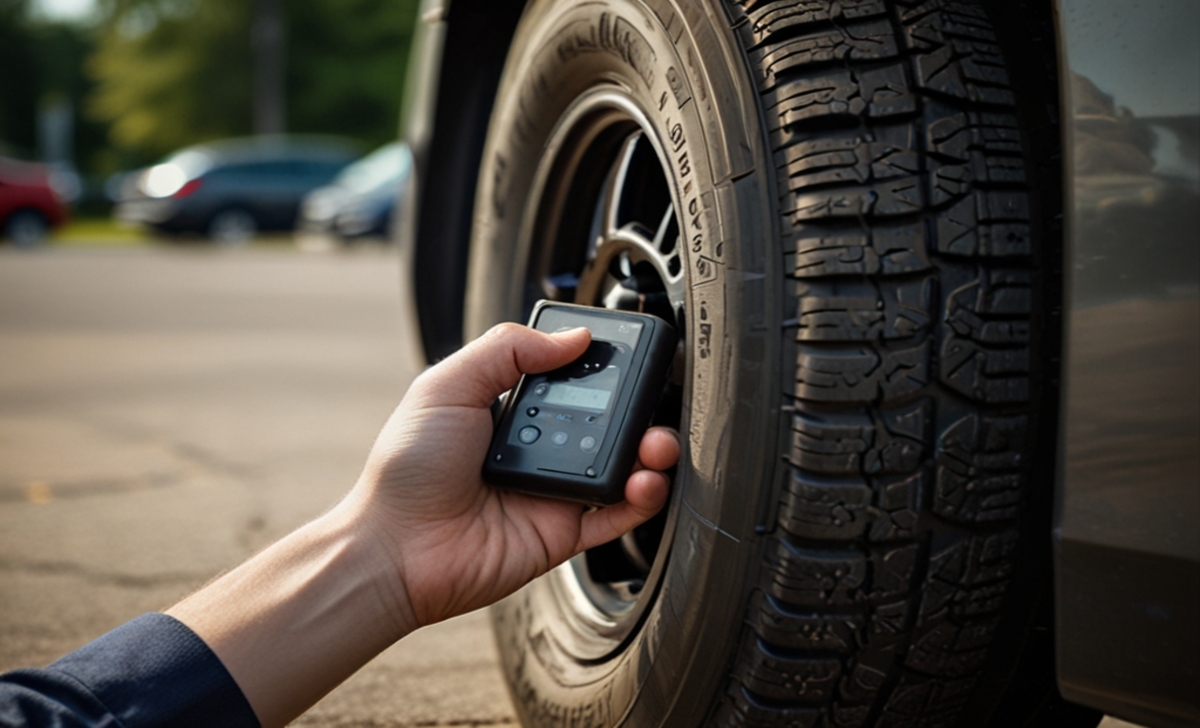
- Dashboard warning lights
- Error messages on the infotainment system
- Incorrect or no tire pressure readings
Causes Of A Missing TPMS Sensor
The Mercedes-Benz TPMS (Tire Pressure Monitoring System) Wheel Sensor may be missing due to several reasons. One possible reason is that the sensor might have been accidentally removed during routine maintenance or tire replacement.
Someone could have stolen or misplaced the sensor, either intentionally or unintentionally. Here are some 10 Reasons why the Mercedes-Benz TPMS wheel sensor missing.
- Sensor Battery Failure
- Sensor Damage
- Sensor Misalignment
- Faulty Sensor Mounting
- Sensor Calibration Issues
- System Malfunction
- Tire Replacement
- Sensor Aging
- Wiring Issues
- Software Update
Diagnosing The Problem
1.Using Onboard Diagnostics (OBD) Tools:
- Connect the OBD tool to the vehicle’s diagnostic port.
- Access the TPMS system via the OBD menu.
- Read the error codes related to TPMS sensors to identify which sensor is missing or malfunctioning.
2.Visual Inspection of the Tires and Sensors:
- Inspect each tire for visible damage or missing valve stems.
- Check the integrity of TPMS sensors mounted on the valve stems inside the tires.
- Ensure sensors are securely attached and undamaged.
3.Consulting the Vehicle Manual for Specific Error Codes:
- Refer to the vehicle’s manual to understand the specific error codes indicated by the OBD tool.
- Follow the troubleshooting steps outlined in the manual for the identified error codes to resolve the TPMS issue.
How To Fix The Mercedes-Benz TPMS Wheel Sensor Missing

There are a few steps you can take to fix the issue of a missing TPMS (Tire Pressure Monitoring System) wheel sensor on your Mercedes-Benz. Here’s a step-by-step guide to addressing a missing TPMS (Tire Pressure Monitoring System) sensor in a Mercedes-Benz:
1.Replacing The Missing Or Faulty Sensor
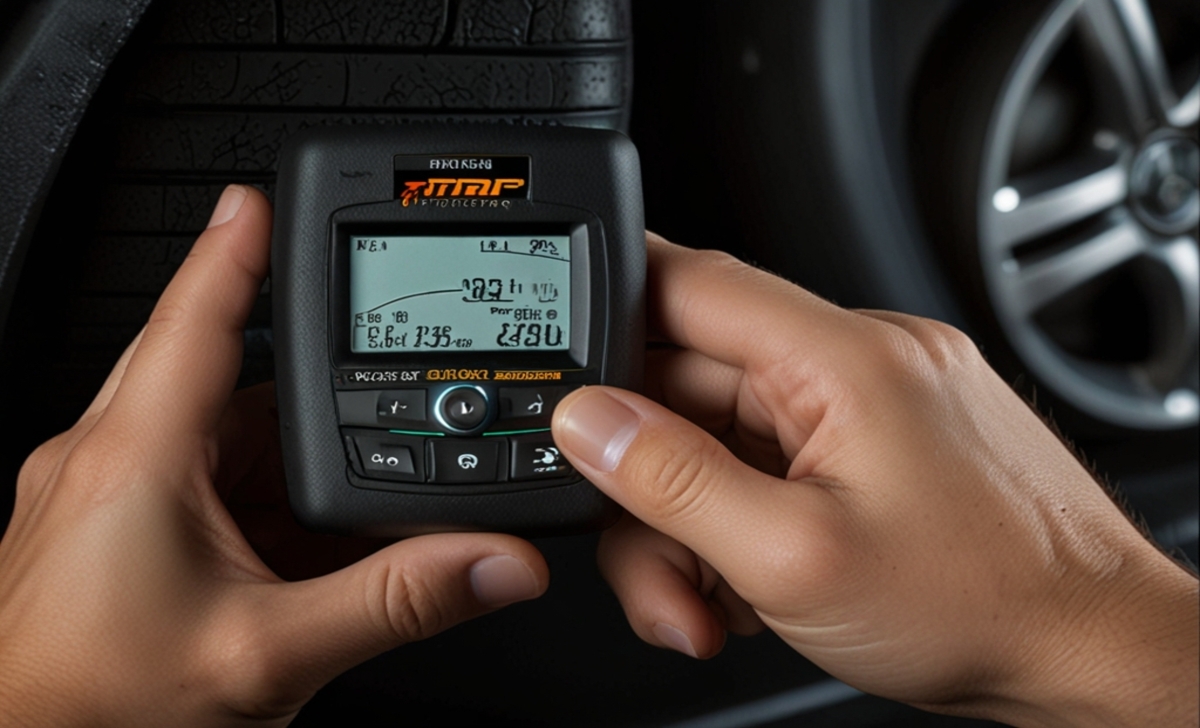
A. Identifying the Correct Sensor Model
To replace a missing or faulty TPMS sensor, the first step is to identify the correct sensor model for your specific Mercedes-Benz. Consult your vehicle’s manual, check the existing sensors, or contact a Mercedes-Benz dealership with your vehicle’s VIN (Vehicle Identification Number) for precise information.
Using the correct model is crucial to ensure compatibility and proper functioning within the TPMS system.
B. Purchasing and Installing the Sensor
Once you have identified the correct TPMS sensor model, you can purchase the sensor from an authorized Mercedes-Benz dealership, a reputable auto parts store, or an online retailer. Ensure the sensor is compatible with your vehicle.
Installation involves removing the tyre and wheel assembly, inserting the new sensor into the valve stem hole, and reassembling the tyre. This process often requires specialized tools and knowledge to avoid damaging the tyre or sensor.
C. Reprogramming the Vehicle’s TPMS System
After installing the new TPMS sensor, it must be programmed to communicate with your vehicle’s TPMS system. This typically involves using a TPMS programming tool to sync the sensor with your car’s onboard computer.
Follow the vehicle’s manual or the tool’s instructions. In some cases, driving the vehicle for a short distance may automatically recalibrate the system, but often, manual reprogramming is necessary to ensure accurate tire pressure monitoring.
2.Professional Service Options

A. Taking the Vehicle to a Certified Mercedes-Benz Dealership
If you prefer professional assistance, taking your vehicle to a certified Mercedes-Benz dealership is a reliable option. Dealerships have specialized equipment, genuine parts, and trained technicians who are familiar with Mercedes-Benz vehicles. They can efficiently diagnose, replace, and reprogram the TPMS sensor.
Although this service may be more expensive, it ensures that the repair is done correctly and often comes with a warranty.
B. Independent Mechanics Specializing in Mercedes-Benz Vehicles
Alternatively, you can visit independent mechanics who specialize in Mercedes-Benz vehicles. These professionals often provide high-quality service at a lower cost than dealerships.
Ensure that the mechanic has experience with TPMS systems and access to the necessary tools for sensor installation and reprogramming. Research and read reviews to select a reputable specialist to handle the job, ensuring your vehicle’s TPMS system is restored to proper working condition.
How To Reset Tire Pressure Sensor Fault
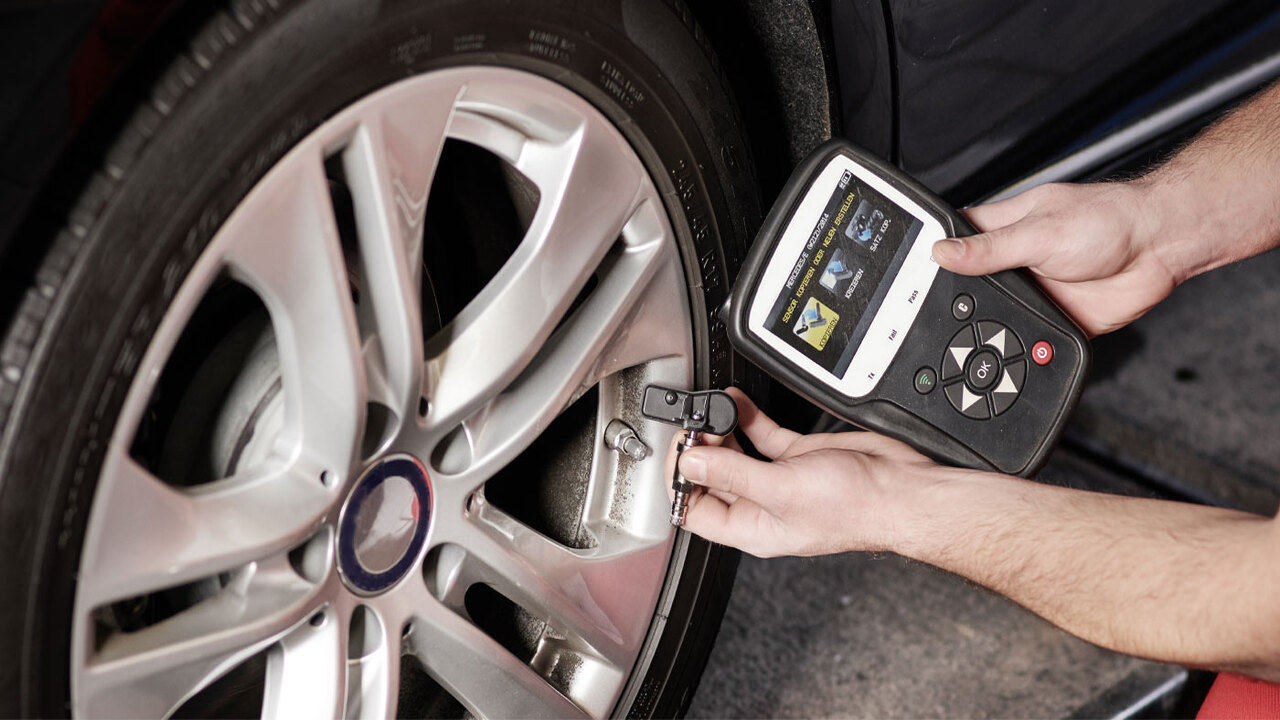
If you’re experiencing a “TPMS Wheel Sensor Missing” error on your Mercedes-Benz, it indicates an issue with the Tire Pressure Monitoring System (TPMS). Here’s a step-by-step guide on how to reset the tire pressure sensor fault and potentially fix the problem:
Step 1: Check Tire Pressure
- Check All Tires: Use a tire pressure gauge to check the pressure of all four tires, including the spare if your vehicle monitors it.
- Inflate Tires: Inflate the tires to the recommended pressure level, which can usually be found on the sticker inside the driver’s door frame or in the owner’s manual.
Step 2: Drive the Vehicle
- Drive for 10-15 Minutes: After adjusting the tire pressures, drive the vehicle at a speed above 20 mph for about 10-15 minutes. This allows the TPMS to recalibrate and reset itself.
Step 3: Reset TPMS from the Dashboard
- Turn on the Ignition: Without starting the engine, turn the ignition key to the “On” position (or press the “Start” button once without pressing the brake).
- Access the TPMS Menu: Navigate through the dashboard menu using the steering wheel controls or the buttons on the instrument cluster to find the TPMS settings.
- Select ‘Reset’ or ‘Relearn’: Select the option to reset or relearn the TPMS. This might be labeled differently depending on the model year and system version.
- Confirm the Reset: Follow the prompts to confirm the reset.
Step 4: Verify Sensor Functionality
- Wait for a Few Minutes: After resetting the system, wait for a few minutes to see if the warning light turns off.
- Recheck Tire Pressure: If the warning light remains on, recheck the tire pressures to ensure they are correct.
Step 5: Inspect TPMS Sensors
- Check for Damage: Inspect the valve stems for any signs of damage or corrosion.
- Check Sensor Batteries: TPMS sensors have batteries that typically last 5-10 years. If your vehicle is older, the batteries might need replacement.
If you have access to a TPMS diagnostic tool, use it to check each sensor’s status. If the error persists, visit a certified Mercedes-Benz service center. They have specialized equipment to diagnose and fix TPMS issues accurately.
Common TPMS Issues And Troubleshooting
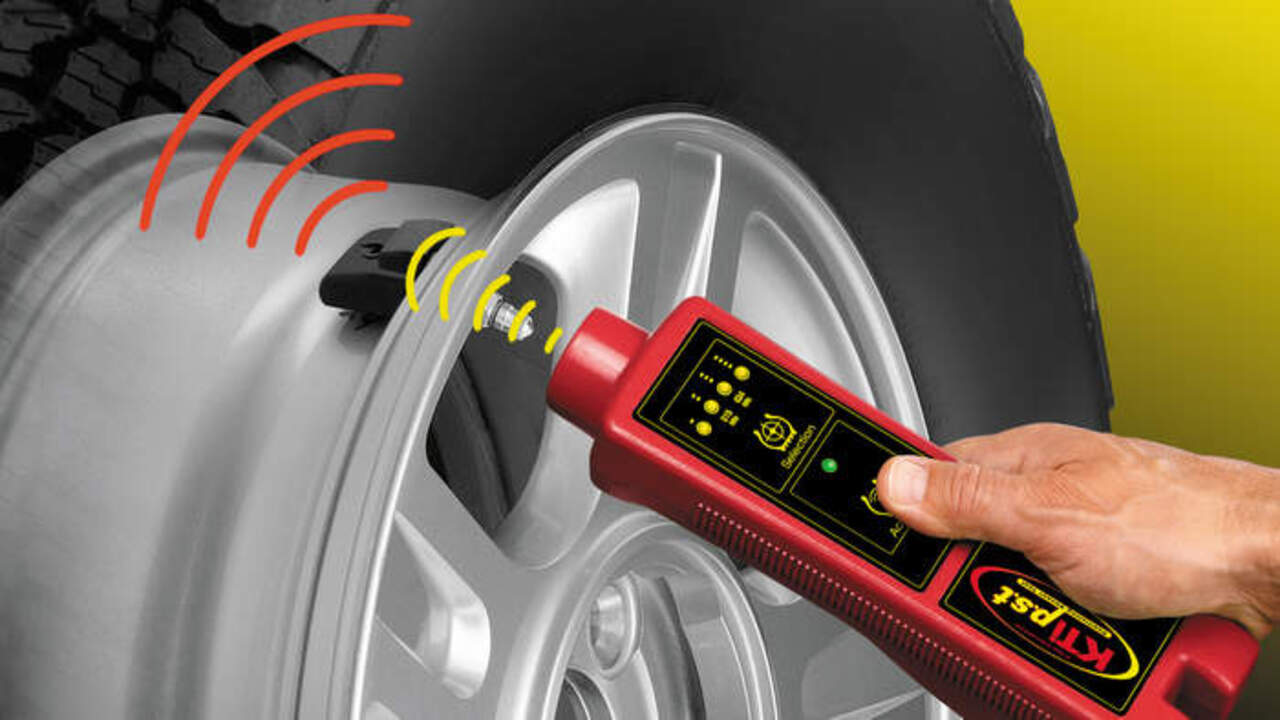
Conclusion
To sum up, having a functioning TPMS (Tire Pressure Monitoring System) and all the necessary wheel sensors, such as the Mercedes-Benz TPMS Wheel Sensor, is paramount. This sensor plays a crucial role in ensuring the safety and performance of your vehicle.
Accurately monitoring the tyre pressure, helps prevent potential accidents caused by underinflated tyres, improves fuel efficiency, and extends tire lifespan. However, this issue can be effectively addressed with prompt and efficient communication from the Mercedes-Benz TPMS wheel sensor missing and proper inspection and replacement of the sensors.
Therefore, it is essential to promptly address any issues related to the TPMS Wheel Sensor and ensure proper functioning for a smooth and secure driving experience.
FAQs
1.What Happens If You Don’t Have Tpms Sensors?
If you don’t have TPMS (Tire Pressure Monitoring System) sensors, you will not receive real-time information about your tire pressure. TPMS sensors are designed to monitor tire pressure and alert you if it falls below a certain threshold.
2.Why Is My Tpms Sensor Not Showing?
There could be several reasons why your TPMS sensor is not showing. It could be due to a malfunction in the sensor itself, a problem with the TPMS module, a low battery, or a faulty connection between the sensor and the module.
3.Do All Mercedes Have Tpms?
No, not all Mercedes vehicles have TPMS (Tire Pressure Monitoring System). TPMS became a standard feature in many vehicles, including Mercedes, starting in the early 2000s. However, it is not present in all models and trims.
4.How Does Tpms Work With No Sensor?
TPMS (Tire Pressure Monitoring System) typically relies on sensors within the tires to monitor their pressure. These sensors send information to a control module, alerting the driver if the tire pressure is too low. However, some newer TPMS systems use indirect methods to estimate tire pressure without sensors.
5.Is There A Way To Bypass Tpms Sensors?
No, there is no legal or safe way to bypass TPMS sensors. TPMS (Tire Pressure Monitoring System) sensors are installed in vehicles to monitor tire pressure and provide a warning if there is a problem. Bypassing or turning off these sensors can compromise safety and increase the risk of accidents.
6.How Much Does It Cost To Replace Tpms Sensor?
The cost of replacing a TPMS sensor can vary depending on the make and model of the vehicle, as well as the specific sensor needed. On average, the cost of a single TPMS sensor can range from $50 to $200, excluding installation fees. It’s recommended to consult with a mechanic or dealership to get an accurate estimate for your specific vehicle.
7.How To Reset Tire Pressure Light TPMS On A Honda Civic?
To reset the tire pressure light (TPMS) on a Honda Civic, start by ensuring all tires are properly inflated to the recommended level. Then, turn the ignition switch to the ON position without starting the engine. Press and hold the TPMS reset button until the light blinks two times.
Release the button and start the vehicle, allowing the system to recalibrate. Drive the car for a few miles to ensure the light stays off. If the light persists, there may be an issue with the tire pressure sensors that require further inspection by a professional.


